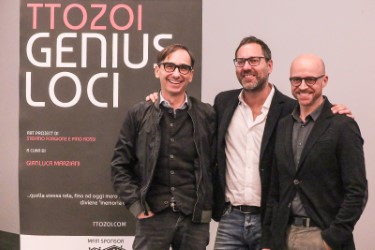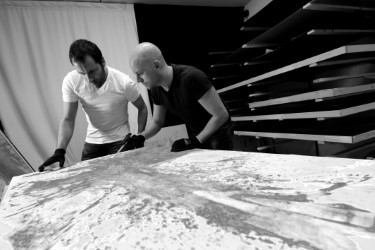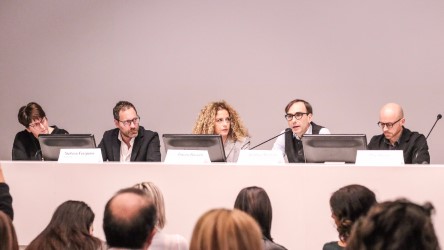Ancient stones mould modern art in Genius Loci show

ROME - The Latin phrase “Genius Loci” has come to mean the particular atmosphere of a place or its “spirit.” The innovative art project headed by MiBACT under this name, featuring work by Italian Ttozoi artists Stefano Forgione and Pino Rossi, plans to utilise the historic significance of Italian monuments to allow viewers to experience art in a new form. The exposition is designed to incorporate the spirit and ambiance of prestigious landmarks into the works themselves.
The exhibitions will take place in the three iconic sites of Reggia di Caserta, the archaeological area of Pompeii and the Colosseum. As landmarks of Italian mastery of design, the ancient form of the monuments will be used to shape the appearance of the artwork physically. Using the stones, moulds and jutting pieces of rock, the artists created their pieces in situ. For 40 days, installations mounted by Forgione and Rossi have been shaped by the surfaces underneath, imprinting every crevasse onto their surfaces. Modern art has literally connected with the ancient canvas.
Following limited viewings at these sites, a personal showing of the works will take place in Reggia di Caserta, and then the pieces will be on view in the Capitoline Museum.
Curator Gianluca Marziani has explained the premise of the project as using the framework of the UNESCO-protected sites to construct the contemporary pieces. “The mould becomes pure linguistic code, a biological application that leads the painting to its limit of possible mutations.” This type of exposition will take the viewer entirely out of the “art gallery” setting, and into nature.
The creators plan to use the natural physical characteristics of the sites to bring out a raw naturality in the works. Marziani has described this process as “an event between causality and control that radicalises the link between Art and Nature, making biology an elaborative and participative phenomenon. A living dialectic that brings the creative factor into the heart of the natural cycle.”
The method by which the art is made is not a formal, rule-abiding process, but “a process that integrates the visible and invisible, memories and the present, history and chronicles, the individual and the collective.” Gone is the brush dipped in dye and rubbed on canvas, as ancient grooves take hold of the work and make it their own.
Francesca Cordò, of the Ministry of Cultural Heritage, spoke to The Insider about the ways in which the ancient and contemporary materials could work together. She described “patina,” a word which has come to mean the ‘old-ness’ of an object which only adds to its beauty. The grandiose landmarks can be seen as having this quality, and, in her view, the contemporary works inspired by them are also able to possess this characteristic, as they are shaped by the ancient form.
Representations of sites steeped in centuries of Italian history will take on a new form in this exhibition, as the works themselves shall be created by antiquity.
Exhibition Dates:
Nov. 14. Reggia di Caserta
Dec. 9 & 10. Archaeological Amphitheatre of Pompeii
Jan. 2018. Colosseum
July 1-31 2018. Reggia di Caserta




